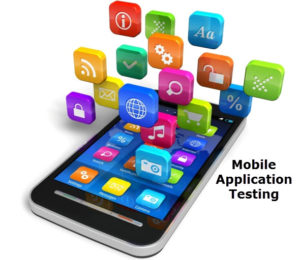- May 01, 2022
- admin
- 1
Challenges Testing Mobile Applications
Here are some of the Challenges testing Mobile Applications.

1.Different Screen sizes.
One of the Challenge testing Mobile application’s is number of Mobile Devices available with different screen sizes to test the mobile applications. So The testing team cannot guarantee that if a tested application works well on a given device, it will work 100% on another device even if it’s from the same product family because the screen resolution, CPU, Memory, OS optimization and hardware could be different.
2 .Different Mobile App Types
Different types of Mobile applications are available such as Native, Web app or Hybrid app. Testing each type of application is different than others since their implementation is different from one another.
3.Different Data Connection types.
There are several types of mobile data connections (3G, 4G,wifi) available. Sometimes there might be no connection available at all or the device is in flight mode. So tester needs to test the Mobile application in all kinds of data networks to make sure app is working fine as per the requirement.
4.Different OS versions. iOS users are known to be upgrading quickly to the newest versions (iOS 8.0 uptake has been around 50% during first two weeks). On the contrary, Android uptake has historically been very slow and the fragmentation is wide. This means that app developers need to support older OS versions and older API’s, and testers need to test for those.
5.Power consumption and battery life.The innovation in the battery storage capacity field hasn’t been as quick as in the app consumption. We are running lots of apps during the day and several processes are running on background without us even noticing. This all requires CPU cycles which on it’s turn require power and thus the batteries tend to dry. When testing mobile apps we need to make sure that the power consumption is kept minimal and the app is developed by keeping the best practices in mind
6.Usability.Mobile device screens are relatively small and there are always more data we would like to present than possible to fit to the screen. It’s challenging to keep the interaction clean and simple for the user, and at the same time display all the necessary information. Font size and readability are other challenging factors of usability. When testing mobile apps it’s important to pay attention to the size of click areas and making sure that all texts are readable without lenses
7.Localization.Most of the apps are designed to be used on international markets. Testing for translation is only one piece of the whole internationalization testing. Testers should also take into account regional traits (locale settings, time zones) and target audience. Changing time while app is running might cause some interesting artifacts. Also some designs that are working in the western world might not work in the east and vice-versa. Right-to-left languages have always kept developers puzzled.
8. Demand of skilled QA Specialists
A completely tested application is liable to be rejected by end users merely due to UI look and feel. The QA specialist need not only access the automation tools but also quickly identify the bugs as UI is critical in mobility. Look beyond the functional aspects of the app and consider end user usability.
9. Industry Standards
Mobile application testing must meet the industry standards for an application to be popular and globally accepted especially in this era of technology.




1 Comment
First blog post – MobileAppsAutomation.com
[…] are some of the challengesautomating mobile […]